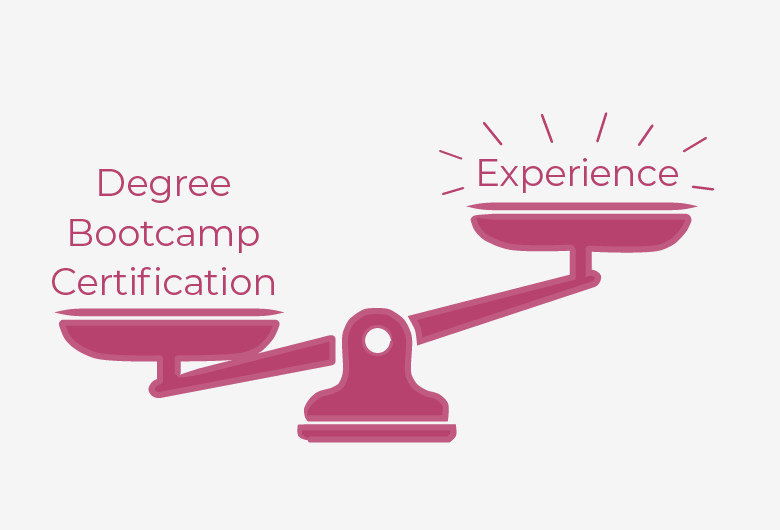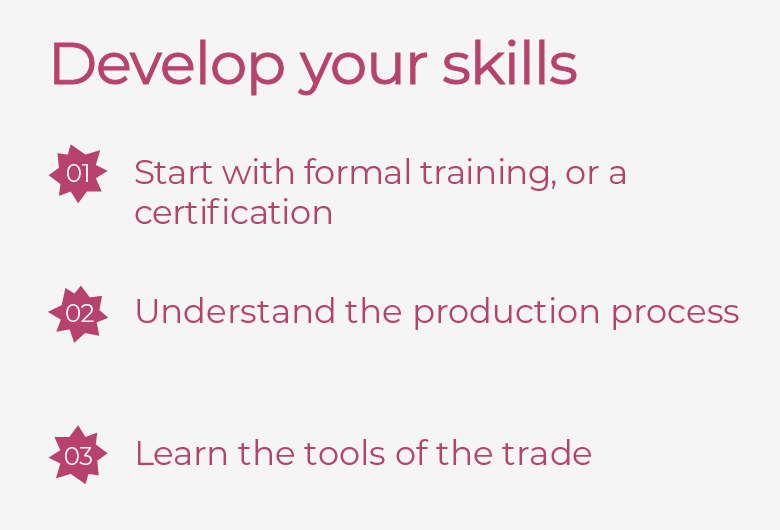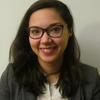How to Get a UX Design Internship in 8 Steps
If you want to break into this up-and-coming field, you need to land an internship.
So you're interested in an UX design internship. In this article we will break down the following questions:
- What do UX designers do?
- What experiences are needed to land a UX design internship?
- How do I pinpoint specific roles and assess company fit?
- What skills do I need?
- How do I prepare my portfolio, resume, and cover letter?
- How do I search for internships?
- When do I start applying for UX internships?
- Breaking down job listings
1. What Do UX Designers Do?
UX, or user experience, design encompasses all aspects of the user's interaction with a company, its products, and its services. The role of a UX designer consists of developing products and services that offer functional, pleasing, and meaningful experiences for the user. Today's users have high standards for their digital experiences, meaning organizations must create the most customer-friendly products in order to stay competitive.
UX designers deal with a lot of ambiguity and occupy an intensely client-facing role. Conducting UX research is a high-stakes task, since organizations depend on these insights to guide their approach to marketing, customer service, and even what products to make and how to make them.
Finally, UX designers spend most of their time presenting their research, convincing stakeholders to abandon their preconceived notions and invest in a new product line or sunset a legacy feature.
2. What Experiences Are Needed to Land a UX Design Internship?

While certification is a plus, the degrees you've obtained or boot camps you've completed are not a recruiter's main focus.
The most important factor in landing a full-time UX design job is internship experience. In other words, practical experience usually supersedes education. Creating design deliverables in a production environment entails vastly different conditions than the “climate-controlled” classroom setting, and employers want people who can contribute 110% right out of the gate.
3. How Do I Pinpoint Specific Roles and Assess Company Fit?

Before you hit up the job boards, think about your preferences in terms of industries, companies, or types of products you want to work on.
What type of company do you want to work for?
There are three types of companies that hire UX designers, each offering opportunities to specialize in a different area of design.
Design studios
Design studios provide consulting services to other companies. IDEO, an innovation and design studio, helped design the first manufacturable mouse for Apple. Design studios work with a range of clients and industries on digital and physical products.
Product-based companies
Product-led companies create digital and physical consumer products, such as electronic devices, household items, and software applications. Examples include Apple, Dropbox, and Procter & Gamble.
Service-based companies
Service-based companies include SaaS (Software as a Service) companies, service businesses (such as hotels or restaurants) and service providers (such as telcos or internet service providers). Examples include Uber, T-Mobile, and Hilton Hotels.
What industries are you interested in?
Consider which industries intrigue you and what type of impact you would make in each. For example, working as a UX designer for a B2B SaaS company (such as Salesforce) involves designing user interfaces for employee-facing software solutions. In such a role, UX writing and information architecture are vital skills.
Your day-to-day responsibilities would look very different from a UX designer at a B2C technology company, who might specialize in product design or interaction design.
Select an industry that already excites you, if possible. If you’re fascinated by the latest developments in AR/VR retail or wearable devices, search for internships in those industries.
What type of designer do you want to be?
Decide on a specialty. Do you want to become a UX researcher, UI designer, product designer, interaction designer, or create your own hybrid role? Do you see yourself brainstorming ideas in a scrappy startup environment or working on structured projects in an established company?
Startups may provide more opportunities to build new things, but the company’s internship program may be less structured. Large enterprises typically offer formal internship programs with mentorship opportunities, but your contribution might be limited in scope.
Assessing company fit
While you may view the recruiting process as one-sided (trying to market yourself to a company), the process is a symbiotic relationship. You have the power to choose whichever company is the right fit for you. Remember, you want to be excited to go to work every day, and some companies just don’t do that for you.
Assessing fit is all about setting your own goals and expectations.
- What type of environment do you want to work in?
- What do you want to learn from your experience?
- How would you like your internship to be structured?
Having answers to these questions and more will allow you to decide what you want and ace questions about why you want to work at a specific company. While answering these questions is one challenge, finding companies that match your answers is another challenge.
The best way to assess company fit is to hear from employees. There are a couple of ways to do this. First, you can read about employee experiences on platforms like Reddit and Team Blind. Another great approach is to talk to employees during informational interviews. An informational interview is your opportunity to ask a current employee everything you want to know about a company and their experiences in a low-pressure circumstance.
4. What Skills Do I Need?

Most UX internships require formal training in UX design, such as a certificate from a UX design Bootcamp or college degree in human-computer interaction, graphic design, or computer science. Even if you’re a self-taught UX designer, it’s best to obtain a certification so your resume isn’t overlooked.
Understand the production process
Aside from learning how to create design deliverables like wireframes, prototypes, and lo/hi-fidelity mockups, you should understand the production process and where each deliverable fits.
UX designers collaborate with multiple departments and work closely with developers. Show that you understand the time and budget constraints of a real-world production environment, and the complexities of partnering cross-functionally with product managers, marketing teams, and so on.
Learn the tools of the trade
Software: Familiarize yourself with popular software applications such as Sketch, Figma, and Adobe. Also take time to learn web-building software such as Wix, Webflow or Squarespace. Check job descriptions for the companies you’re interested in: they may list specific software applications that you should be proficient in.
Programming Languages: UX designers aren’t required to code, but they do need to know HTML, CSS, and JavaScript so that they can make rapid changes to a website or app without depending on a developer.
Soft Skills: Also, take time to understand what soft skills UX designers need. Most job descriptions list qualities like collaboration, communication, and composure in a high-pressure environment.
👉 How should UX designers answer "what is your greatest weakness?" Find out here.
5. How Do I Prepare My Portfolio, Resume, and Cover Letter?

Preparing your portfolio...
Most companies require internship candidates to have a portfolio with at least three case studies. These should demonstrate expertise in design, prototyping, research, and information architecture. Don’t just reel off a list of design tools you used. Explain why you chose them and discuss the alternatives forgone. Design skills are important, but recruiters also want to understand how you make design choices.
Include volunteer work, passion projects, and capstone projects if you’re enrolled in a course. Remember that portfolio work isn’t restricted to internships or formal work experience. You can display your work using a design-specific portfolio site such as Behance, Dribble, or UXfol.io.
Finally, demonstrate your writing and communication skills by introducing yourself in a video on your website, or blogging about UX design. UX designers do a great deal of writing and public speaking, so these skills are indispensable.
Preparing your resume and cover letter...
Format your resume and cover letter in a way that flatters you. For example, if you have just one or two in-depth projects, don’t be afraid to write a whole paragraph summarizing each. If you’ve completed a number of internships and want to highlight a diversity of experience, bullet points might serve you better. Always include links to your work.
👉 Is Notion the right platform to build your website? Find out if it's for you, and how to use it.
6. How Do I Search For Internships?

Start searching and applying for internships at least six months before your desired start date, as the interview process can take several months.
Big tech companies
This includes Google, Facebook, LinkedIn, Apple, Microsoft, Amazon and more. Established programs provide excellent mentorship and networking opportunities, but less autonomy than smaller design programs.
These internships may appear under different names, like UI, Human Interface, Interaction, or Product design. The job descriptions are all fairly similar, but be sure to confirm that the work will interest you before applying.
These companies tend to offer annual, structured internship programs. Pay attention to their recruiting cycles-- many start accepting applications for summer internships in the fall.
Smaller start-ups
These internships may be more difficult to find, but will likely provide a lot of independent, autonomous work that you can add to your portfolio. Job postings for these positions are often found on Indeed and Monster. Also be sure to check out design-specific job boards, such as Dribbble, Cofolios, and JustUXJobs.
The recruiting timeline for smaller companies is inconsistent. However, many of them tend to recruit after big tech companies, so checking back in the winter and spring is likely your best bet.
Other resources to find an internship
In addition to the sites listed above, utilize Facebook and LinkedIn. Find groups for design jobs in your city. Within these communities, job ads are often posted by a decision-maker whom you can DM directly.
Another useful way to find internships on LinkedIn is to reach out to current employees. Requesting an informational interview can demonstrate your interest in a company and give you an opportunity to learn more about it and assess fit. Many times, the most recent full-time hires are the ones that will select candidates for a first-round interview. Getting on calls with these employees will enable them to recognize your name on an application and give you a higher likelihood of being selected for an internship.
👉 Practice for the UX interview using this tool.
7. When Do I Start Applying For UX Internships?
The application and interview process for UX internships can take months. For this reason, it is important to be completely prepared to apply 6-12 months before your desired internship start date. Obviously, this takes a lot of foresight and planning to be this prepared.
Additionally, many companies take applications in cycles. While they save internship spots for each cycle, applying to earlier cycles may offer applicants more flexibility with interviews, salary negotiations, and more. Also, companies can potentially close off later cycles if they fill their positions faster than expected. As a result, it is best to apply to UX internships as soon as you feel you are ready.
8. Breaking Down Job Listings

Portfolio examples
Your portfolio is a crucial element within your application, and can be the difference between getting an interview and not getting one. Here are a few of our favorite portfolio examples:
https://www.bestfolios.com/portfolio/elizabethlin
https://www.bestfolios.com/portfolio/jasmineacebes
The information provided herein is for general informational purposes only and is not intended to provide tax, legal, or investment advice and should not be construed as an offer to sell, a solicitation of an offer to buy, or a recommendation of any security by Candor, its employees and affiliates, or any third-party. Any expressions of opinion or assumptions are for illustrative purposes only and are subject to change without notice. Past performance is not a guarantee of future results and the opinions presented herein should not be viewed as an indicator of future performance. Investing in securities involves risk. Loss of principal is possible.
Third-party data has been obtained from sources we believe to be reliable; however, its accuracy, completeness, or reliability cannot be guaranteed. Candor does not receive compensation to promote or discuss any particular Company; however, Candor, its employees and affiliates, and/or its clients may hold positions in securities of the Companies discussed.
